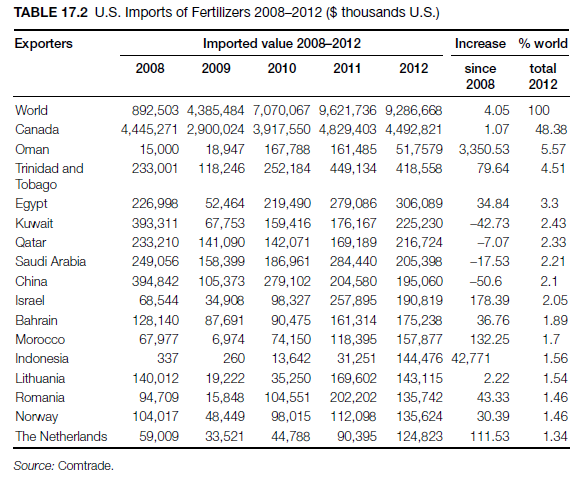The product selected for importation may be manufactured by several firms in different countries or within the same country. The next important step is to assess and select the right supplier on the basis of a number of critical factors, such as quality, delivery time and supplier reliability, transportation cost, import duty implications, protection of intellectual property rights, and suppliers’ ability to meet standard requirements.
A study conducted in 1983 on the decision process of U.S. purchasing agents suggests timely delivery, product brand name, and style as important factors that determine purchasing decisions (Ghymn, 1983). A major concern in the minds of many U.S. importers is the quality of the imported product. In today’s marketplace, where many firms are competing for the buyer’s attention, it is the customer who defines quality in terms of his or her needs. To be successful, an importer should select a supplier who can deliver a product that satisfies consumer needs, has minimum defects, and is priced competitively. Also adding to the importance of quality and the local market appeal of the product is the availability of core supplier benefits, such as warranties, timely delivery, favorable transportation terms, as well as after-sales service and reliability. Low-cost suppliers can also be identified on the basis of their proximity to raw materials, labor costs, current exchange rates, or transportation costs.
Import duties could be eliminated or substantially reduced by selecting suppliers located in countries that participate in a preferential trade arrangement. In the United States, for example, most products imported from Canada, Mexico (NAFTA), Caribbean countries (CBI), Israel (FTA), and countries eligible for GSP benefits are subject to duty-free treatment. For example, ceramic tile imported from Italy is subject to a 13.5 percent duty, whereas an identical tile coming from Israel would cost the importer only 4.3 percent duty. To qualify for such favorable treatment, it is necessary to mark the country of origin of the import.
Selection of the supplier should also be based on the integrity of the product. Integrity of the product includes the assumption that the import does not violate any intellectual property rights registered in the country, such as patent, trademark, design, or copyright, and that it meets certain regulatory requirements, such as product compliance with the various import laws relating to marking, labeling, inspections, and safety. There has been a rise in the production and sale of counterfeit and pirated goods in many parts of the world. Industry experts, for example, estimate lost sales from unauthorized use of U.S. intellectual property rights at $60 billion annually. It is also important to select suppliers that meet certain product safety standards. For example, food service ceramics must be tested for lead, and toys must meet labeling and safety standards. A potential importer should be aware of any foreign laws that might affect purchase, such as export restrictions or quotas. The importer also needs to ascertain whether the supplier has already appointed other distributors or sales agents in the territory and whether the distribution channels available are acceptable in terms of overall profitability and risk. For example, an agent is likely to realize limited profits if the supplier has a distributor in the market (see International Perspective 17.3 for a typical import transaction).
Once a small number of potential suppliers are identified, a personal visit can be made to perform the necessary evaluation and to select the right supplier. Final selection will be made based on factors such as (1) the supplier’s international knowledge and experience; (2) the supplier’s willingness to devote sufficient time to develop the market; (3) the supplier’s willingness to provide necessary training; and (4) the supplier’s agreement to provide certain market exclusivity and an acceptable payment arrangement. It is also important to obtain a credit report for the supplier. Such evaluation is critical regardless of the marketing channels adopted by the importer.
Helpful Tips to Limit Choice of Countries/Suppliers
Once you have selected the product for importation, your next step is to link up with overseas suppliers. It is important to limit your choice of countries or suppliers from which you will import the selected product. Here are some helpful steps.
Step 1: Let us assume that you have chosen to import fertilizers in view of your background and previous work experience as an organic chemist in a fertilizer company.

Step 2: You can access a trade database (Comtrade.org or tradedataweb.gov) to get the HTS number as well as establish the volume of imports and supplying countries during the past few years (see Table 17.2).
Step 3: You see that U.S. imports in fertilizers are growing by about 4 percent a year. Note that imports do not always determine market potential. A product can always be adapted to suit the market. The data shows that Indonesia, Oman, and Israel have been gaining market share over suppliers from other countries. You can also inquire about prices and quality.
Step 4: You can contact the embassies or commercial attaches of Indonesia, Oman, and Israel in the United States to obtain a list of suitable manufacturers or suppliers. You can also consult the following trade publications on the Internet: Asianproducts.com; tradechannel.com; eximinfo.org; compass.com; made-in.com; alibaba.com; sourcing. tdc.trade.com; wand.com; worldchambers.com; Foreign-trade.com/exhibit.htm.
Step 5: Contact potential suppliers and request client references, licensing information (license to do business), and information on their manufacturing: experience, cost, quality, production capacity delivery schedule, and intellectual property protection.
Step 6: Request product samples (prototype), and evaluate whether the product has sufficiently incorporated your design specifications and its overall quality. This can lead to a purchase agreement (Table 17.3).

Source: Seyoum Belay (2014), Export-import theory, practices, and procedures, Routledge; 3rd edition.

It is really a great and helpful piece of information. I am glad that you shared this useful information with us. Please keep us informed like this. Thanks for sharing.